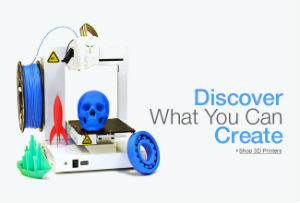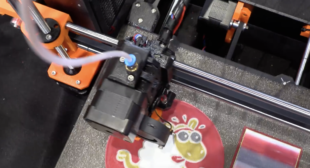
Self-Replicating Machines and the Future of Digital Fabrication
Introduction: From Ribosomes to Robots
Four billion years ago, nature invented the ribosome—the tiny molecular machine that assembles life one amino acid at a time. Alone, it is painfully slow, but its power lies in replication: ribosomes make ribosomes, scaling biology to trillions of parallel builders. This is how elephants, trees, and humans are constructed—piece by piece, molecule by molecule.
Today, researchers are attempting to do the same for engineering. At MIT’s Center for Bits and Atoms, Neil Gershenfeld and his colleagues are developing assemblers: robotic systems that can not only fabricate structures but also replicate themselves. If ribosomes created the biosphere, assemblers may create a new technosphere—a civilization built from machines that make machines.
Neil Gershenfeld: Self-Replicating Robots and the Future of Fabrication
The Fiction of Bits and Atoms
The foundations of computing, built by Alan Turing and John von Neumann, separated bits from atoms: the processor from memory, the abstract from the physical. But this was a fiction. Every computation happens in a physical substrate—it consumes space, time, and energy.
Turing later studied morphogenesis (how patterns form in nature), and von Neumann studied self-reproducing automata. Both realized late in life that computation must rejoin fabrication. Gershenfeld’s work picks up that thread: uniting information and matter into a single continuum.
Digital Materials: Beyond 3D Printing
While 3D printing has revolutionized prototyping and small-scale manufacturing, it is still analog at its core: the intelligence resides in the software, not the material.
Biology works differently. DNA, proteins, and cells carry their own instructions. They self-correct, assemble, and disassemble with no central controller.
The future of fabrication lies in digital materials—discrete building blocks like LEGO, but at the micro- and nano-scale. These blocks enforce correct assembly, allow disassembly, and can be endlessly reused. Instead of additive or subtractive processes, the factories of the future will use assembly and disassembly, just as biology does.
Self-Replicating Assemblers: The New Ribosomes
In MIT’s labs, robots are being designed to build both complex structures and copies of themselves. These systems scale hierarchically:
-
Microrobots assemble small components.
-
Larger robots, built from those components, assemble aircraft, satellites, or habitats.
-
Each layer builds the next, just as cells build tissues and tissues build organisms.
This recursive capacity allows exponential scaling. Assemblers that make assemblers could transform industries from aerospace to healthcare, and even make it possible to build civilizations on Mars.
Opportunities and Dangers of Democratized Fabrication
The implications of this technology are double-edged. A FabLab can empower a community to make almost anything—from solar panels to medical devices. But in theory, it could also be configured into a bio lab, enabling dangerous experiments.
Unlike nuclear weapons, which can be tightly controlled, general-purpose assemblers cannot be locked down. Command-and-control regulation won’t work. The only viable strategy is openness and transparency:
-
Create incentives for people to innovate in the open, where they gain support, resources, and community.
-
Make secrecy less attractive than collaboration.
-
Rely on distributed trust rather than central policing.
This mirrors how the early biotech community convened at the Asilomar Conference in the 1970s to set ethical guardrails. But today’s reality is even more diffuse. Anyone, anywhere, could build powerful tools. Gershenfeld argues that only transparency can keep this safe.
Evolutionary Design: Lessons from Biology and AI
The genome doesn’t store a body plan. It stores a growth program—a sequence of developmental rules. From these rules, five fingers emerge not because “five” is written in DNA, but because gradients, symmetry breaks, and morphogenetic patterns converge on five.
This is also the secret of artificial intelligence. AI hasn’t invented new search methods—it has discovered better representations that make search meaningful. Similarly, evolutionary design in fabrication must rely on developmental programs, not rigid blueprints.
In this way, digital fabrication rediscovered what biology already knew: compression, adaptability, and evolvability are the keys to complexity.
Toward Life in Non-Living Materials
If assemblers can build at scales ranging from atoms to airplanes, then the line between biology and engineering blurs. Gershenfeld emphasizes: this is not copying life—it is creating life-like processes in non-living matter.
Instead of global supply chains with millions of components, future technology may require only ~20 fundamental building blocks—properties like conductive, insulating, magnetic, dielectric, and flexible. From these, all other technologies could be composed.
This would allow:
-
Bootstrapping a civilization on Mars using only local resources.
-
Circular economies on Earth, with no waste.
-
A universal “technological genome” for fabrication.
Embodied Intelligence: Beyond Today’s AI
Current AI models run on data centers that consume megawatts of power. Yet life operates at the nanoscale with breathtaking efficiency—molecular intelligence.
The next phase of AI will not be larger models, but embodied AI: intelligence woven into materials, morphogenesis, and fabrication. Instead of processors controlling robots, the intelligence will be in the robots themselves, just as DNA carries intelligence into every cell.
The Human Dimension: Why Making Matters
Beyond technology, there is something profoundly human about fabrication. Across thousands of FabLabs worldwide, people of all ages and backgrounds have discovered the joy of making.
Making crosses sectarian divides in conflict zones. It brings meaning to communities where consumption once replaced creation. It touches something ancient in us: the deep drive to shape our environment.
As Gershenfeld says:
“The most important thing made in these labs is making itself.”
Meaning, Recursion, and the Next Step
When asked about the meaning of life, Gershenfeld doesn’t claim to know. But he suggests that the process of creation—the recursive cycle of life building life, machines building machines, and humans shaping their world—is itself deeply meaningful.
From ribosomes to assemblers, from amino acids to digital building blocks, from atoms to civilizations, the story of existence is recursion all the way down.
And perhaps the meaning isn’t to arrive at a final answer, but to continue the creative process—forever shaping, evolving, and discovering.
Conclusion: The Next Industrial Evolution
The ribosome created biology. Assemblers may create a new kind of life, built not from carbon and proteins, but from circuits and composites.
This is more than an industrial revolution. It is a transition in how the universe creates complexity.
-
From analog to digital fabrication.
-
From automation to autonomous evolution.
-
From consumers to creators.
The future factory is not a place. It is a network of recursive, embodied intelligence that spans Earth, Mars, and beyond. And in that future, the most valuable thing we make may not be machines, but meaning itself.
Crypto Rich ($RICH) CA: GfTtq35nXTBkKLrt1o6JtrN5gxxtzCeNqQpAFG7JiBq2
CryptoRich.io is a hub for bold crypto insights, high-conviction altcoin picks, and market-defying trading strategies – built for traders who don’t just ride the wave, but create it. It’s where meme culture meets smart money.













Comments